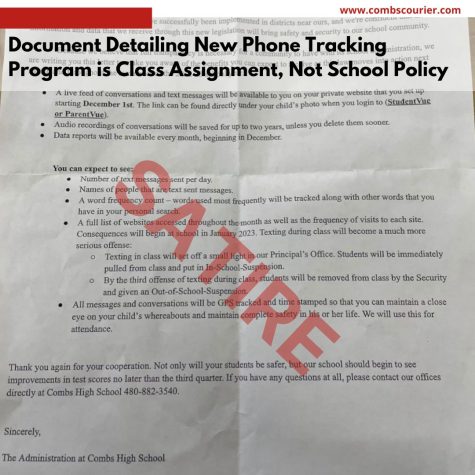The Other Side: The Struggles of Virtual Teaching
May 6, 2021
After adjusting the angle of the camera one final time, Andrea Dales stood behind her desk positioned in the view of both virtual and in-person students. Today was a Multiple Choice Monday— students were to analyze a short passage and answer the multiple choice questions that follow. After, they would receive time to discuss their answers with their peers while online students utilized the chat option within the Google Meet. Only after an awkward five minutes would three of four students begin to converse.
This was a routine occurrence.
“I could just have the attitude that ‘I just can’t reach the online kiddos, so why try,'” Dales said, “but that goes against everything I believe.”
While teaching rigorous courses like AP Language & Composition, Dales must manage the students before her while simultaneously pushing for student participation from those she is unable to see. Regardless, Dales has incorporated online students regularly into her curriculum.
“I do work hard to be sure my virtual students do not feel left out; I have worked hard to make everyone comfortable with asking me to repeat things, comment in the chat, let me know when I am on mute, etc,” Dales said.
While group assignments are typically divided— with no connection between the various hybrid learners— Dales ensures that virtual students communicate directly with in-person, effectively uniting the classroom. When students split into groups, one in-person student from each set will log into Google Meet, from there enter a breakout room, and then place the chromebook on an empty desk. From the perspective of an online learner sitting isolated at home, the student feels as if they are in class.
Additionally, any comments made by in-person students are relayed back to those online.
“If I want people to engage, they need to know what the rest of the class is contributing. I think that that often gets more people to participate.” Dales said, “I do feel bad sometimes because I mostly stay at my desk, but I think it makes it easier all the way around and I try to share the funny comments kids make as well as the discussion ones.”
However, the engagement from online students is sporadic and continuously emphasizing involvement does not come without flaws.
“It is a lot of work. . . I am always exhausted and even more behind in grading and planning than I normally am,” Dales said.
Though the online portion of teaching is adjustable, “it is hard to balance the two at the same time,” Dales said.
Virtual students are not alone in carrying the stress of technological mishaps and an entirely new system of education— teachers too are climbing over adversity and the demanding nature of being separated from students, each in their own way.
Like Dales, teachers are just trying their best to deal with this contingency tossed at them— they too may struggle— and it is important to never forget that.












